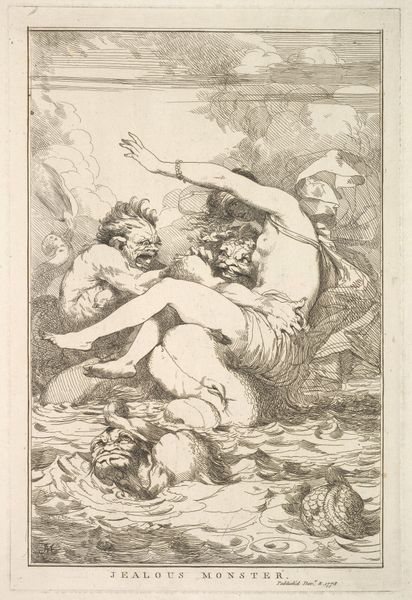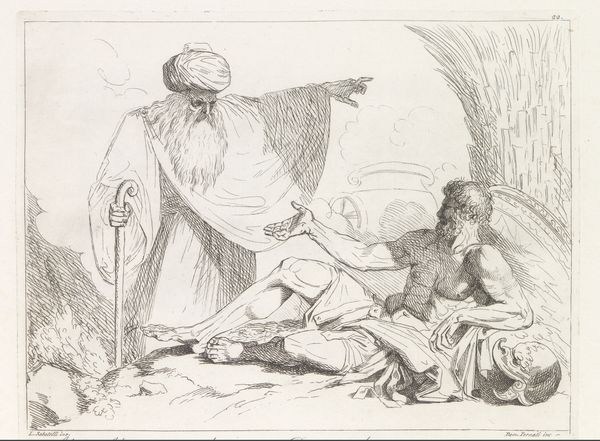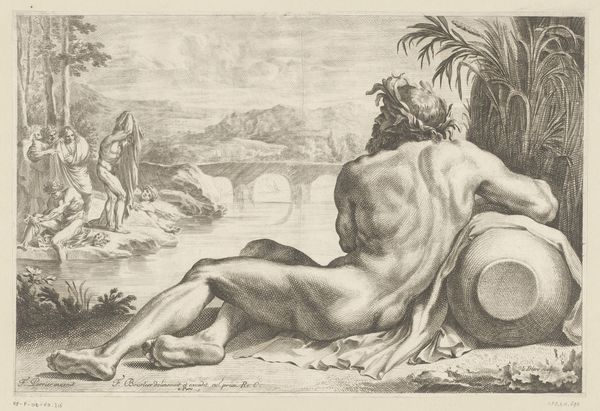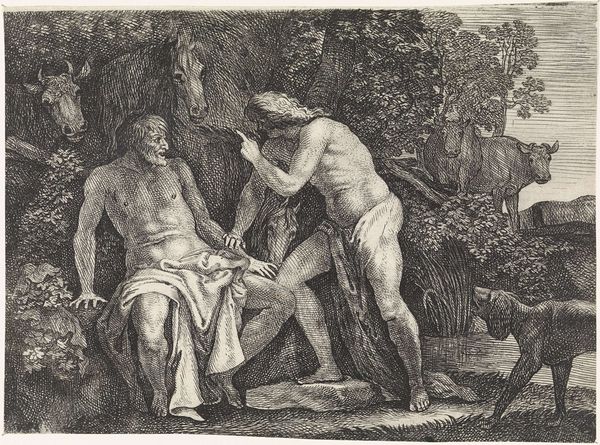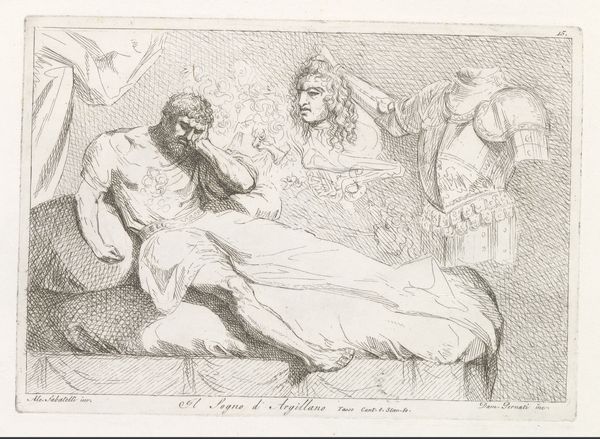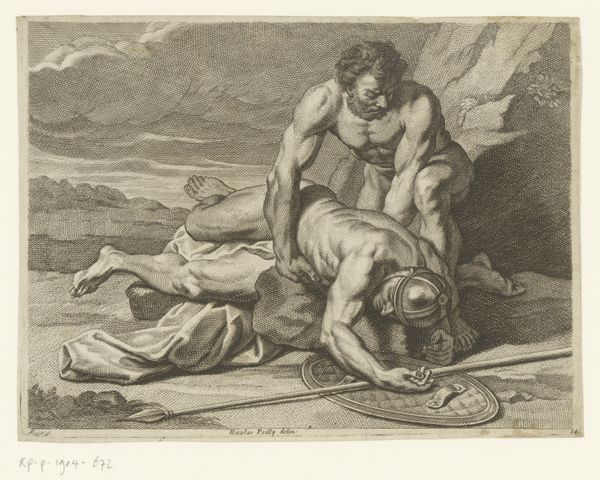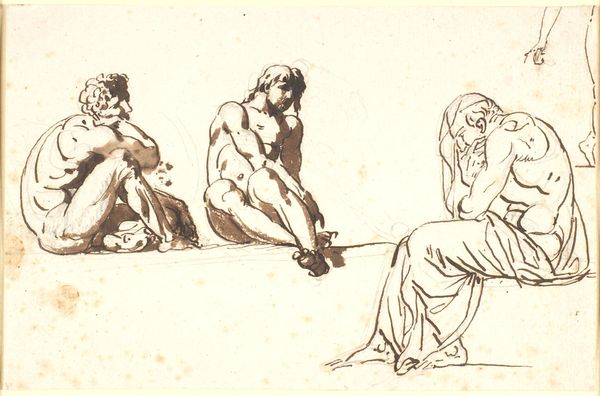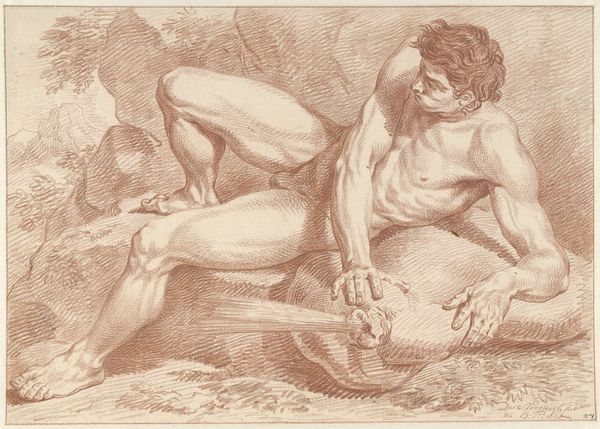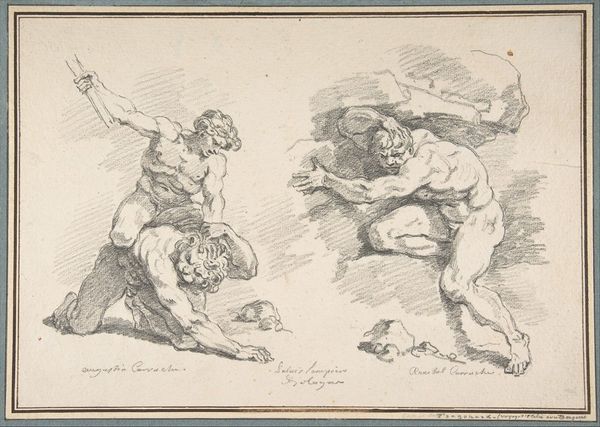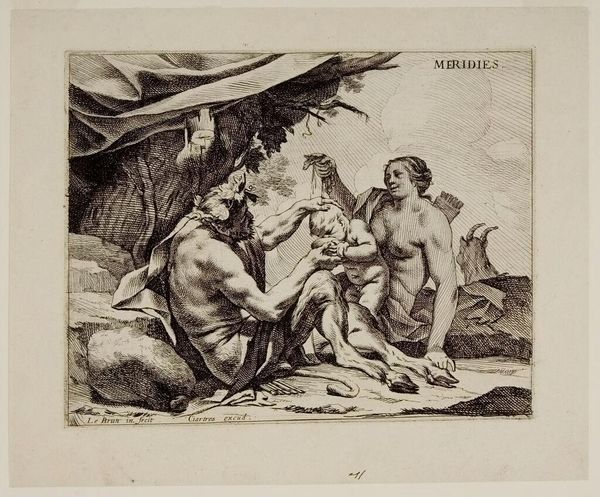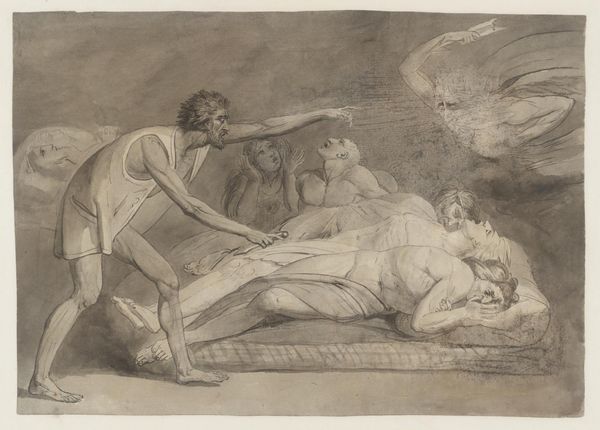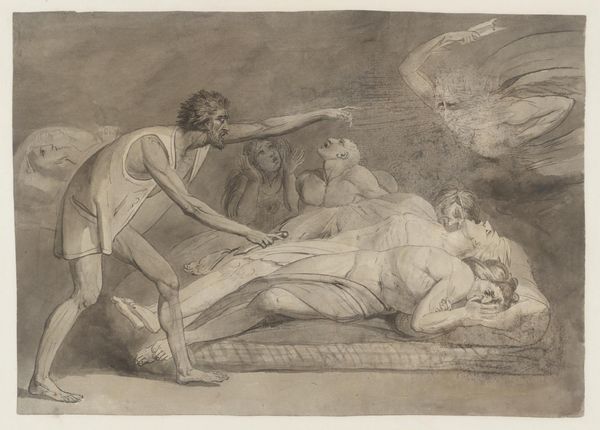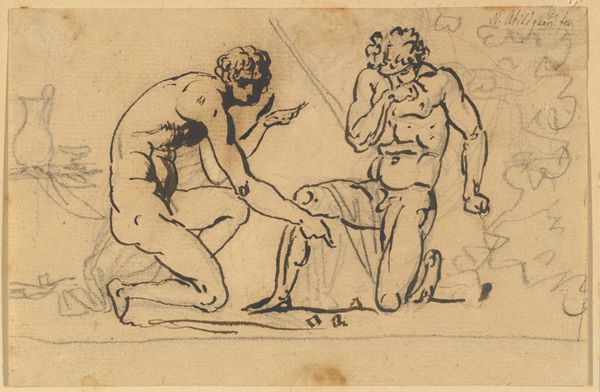
etching, engraving
#
neoclacissism
#
etching
#
pencil sketch
#
landscape
#
charcoal drawing
#
figuration
#
mythology
#
engraving
Dimensions: height 172 mm, width 226 mm
Copyright: Rijks Museum: Open Domain
Editor: We're looking at "Mercurius en Argos," an etching and engraving made between 1793 and 1804 by Damiano Pernati. The figures are really striking, they have such detailed musculature...it feels very academic. What story do you see being told here? Curator: I see a visual power struggle meticulously rendered. Note the male gaze: one figure is actively watching while the other evades eye contact. How might we interpret the myth of Mercury and Argus, often told from a patriarchal perspective, through a lens of surveillance and control? Does the composition reflect the anxieties of a society grappling with shifting power dynamics? Editor: That's fascinating! I was just thinking about the artistic skill involved. You're making me reconsider the whole scene, viewing the work as a document that could highlight power and surveillance? Curator: Absolutely! Consider also that Argos, with his many eyes, embodies the ever-present gaze of authority, perhaps reflecting the era’s own increasing societal surveillance. The myth becomes a cautionary tale about visibility, knowledge, and subjugation. Could it speak to current sociopolitical tensions surrounding privacy and the abuse of power? Editor: So, beyond just mythological representation or Neoclassical style, you are suggesting the artwork invites analysis in light of broader societal systems of control and perhaps contemporary debates on privacy. Is that correct? Curator: Precisely. How can art history engage in dialogues with contemporary concerns around identity and gender in this context? By analyzing historical pieces with contemporary lenses, we gain fresh insights and expose hidden dimensions within seemingly straightforward narratives. Editor: This is more than I expected! Thanks for connecting the artwork with these broader themes. I definitely see it differently now, more critically, less focused on beauty alone. Curator: It’s vital we ask ourselves, whom does this image serve? Whose voices are amplified, and whose are silenced? Considering artworks as artifacts embedded in their specific sociopolitical moment opens exciting new pathways for understanding.
Comments
No comments
Be the first to comment and join the conversation on the ultimate creative platform.
